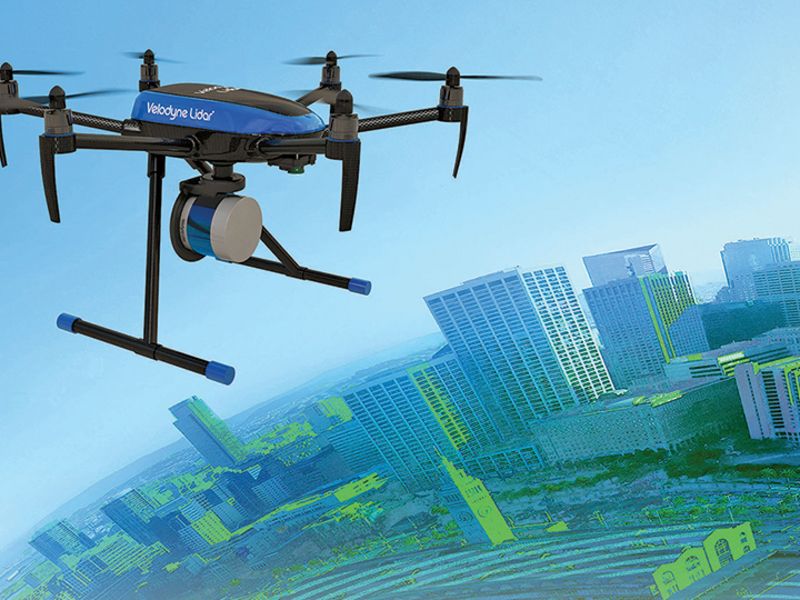
From shipyards to sidewalks, rising demand for consumer goods has compelled logistics operators to rethink the way products travel across the world and to customers’ doorsteps.
Increasingly, they’re automating those movements from point A to point B. Those automated systems are relying upon lidar, the laser sensors that can help robots determine their exact position in the world and detect obstacles in their paths.
Lidar is perhaps best known for its use in self-driving taxis, but the uses for lidar are branching beyond passenger vehicles into just about anything that moves. Lidar sensors are now used in warehouses, for shipping and last-mile delivery, and at ports and elsewhere.
“When you look at the huge volume drivers for the business in the next two to three years, we see the robotics segment as being one of the big volume drivers in the near term,” said Anand Gopalan, CEO of Velodyne Lidar, a San Jose, Calif., technology company that pioneered lidar for automotive purposes and increasingly supplies it for other applications.
Velodyne has more than 300 customers. More than half the company’s revenue now comes from beyond the automotive sector, Gopalan said.
Instead of automated vehicles, industrial and smart-city applications are now leading the first wave of mass lidar adoption.
Ouster, another lidar company, has seen similar growth trajectories. The company has 800 customers, according to financial filings. Angus Pacala, the company’s CEO, says only about 30 percent of its revenue is derived from automotive.
That’s a far cry from only a few years ago, when lidar suppliers banked on the sensors proliferating in autonomous vehicles. As timelines for the arrival of those vehicles were delayed, lidar companies developed less-expensive sensors intended for use in certain driver-assist systems. Now those systems, which cost less than $1,000 per unit, are being tailored for industrial uses.
Amid the e-commerce boom that’s been accelerated by the pandemic — by as much as seven years from pre-COVID-19 plans, according to Commission on the Future of Mobility’s Alisyn Malek — that’s a small price to pay for efficiency and speed.
One Velodyne robotics customer told Gopalan that automated delivery has reduced the cost of delivering a package from $1.60 in the last mile to 6 cents.
One step back in the logistics chain: As big-box stores suffer from consumers’ newfound penchant for online shopping, some are being converted into warehouses and distribution centers. Lidar is speeding that renovation process.
“It allows them to basically walk in and have the robots learn the layout of the warehouse and just get going,” Gopalan said. “Versus these robots that use magnetic strips on the floor and things like that. With lidar, you don’t need guardrails. You just drop them in, and the robots are able to map and localize.”
Warehouses are but one link in the chain. The Port of Jebel Ali in Dubai, for another example, the largest seaport in the Middle East, uses Velodyne’s lidar on automated guided vehicles and internal terminal vehicles that transfer freight and containers.
From maritime applications to ports, trucking, warehouses, distribution hubs and last-mile deliveries, lidar sensors are underpinning the entire journey of packages and goods.
“We’re seeing uses for it across every part of the chain,” Gopalan said.

